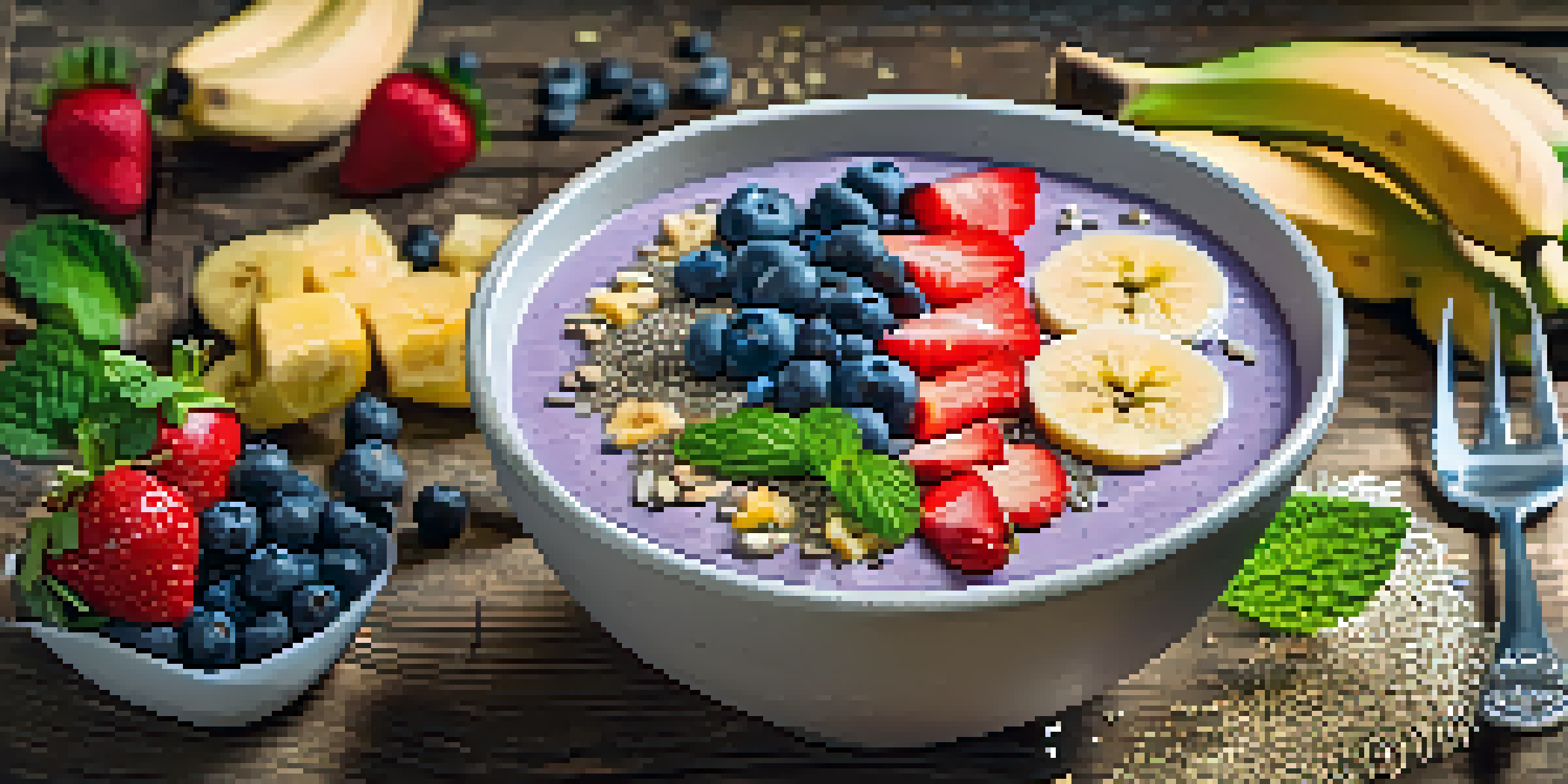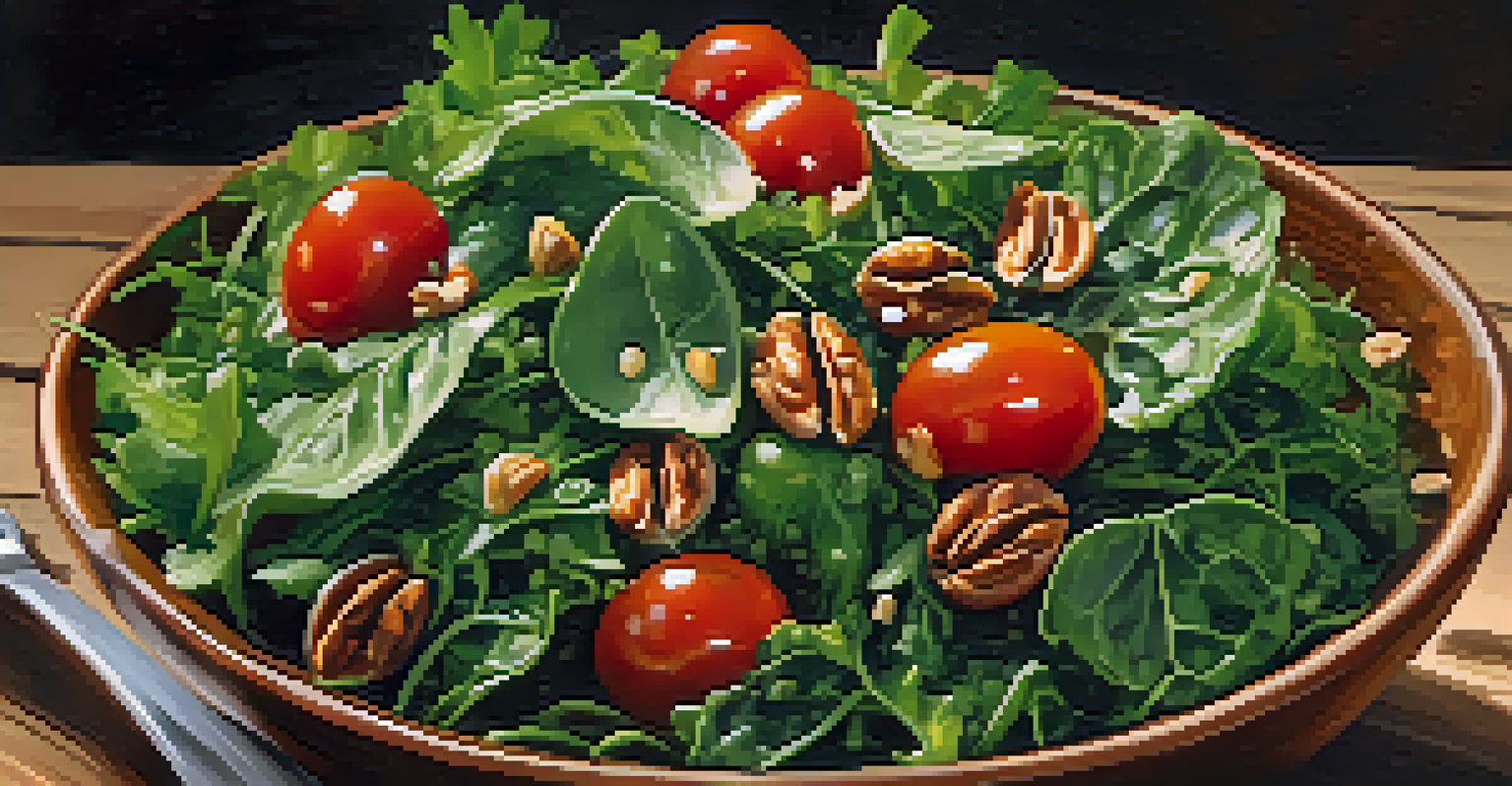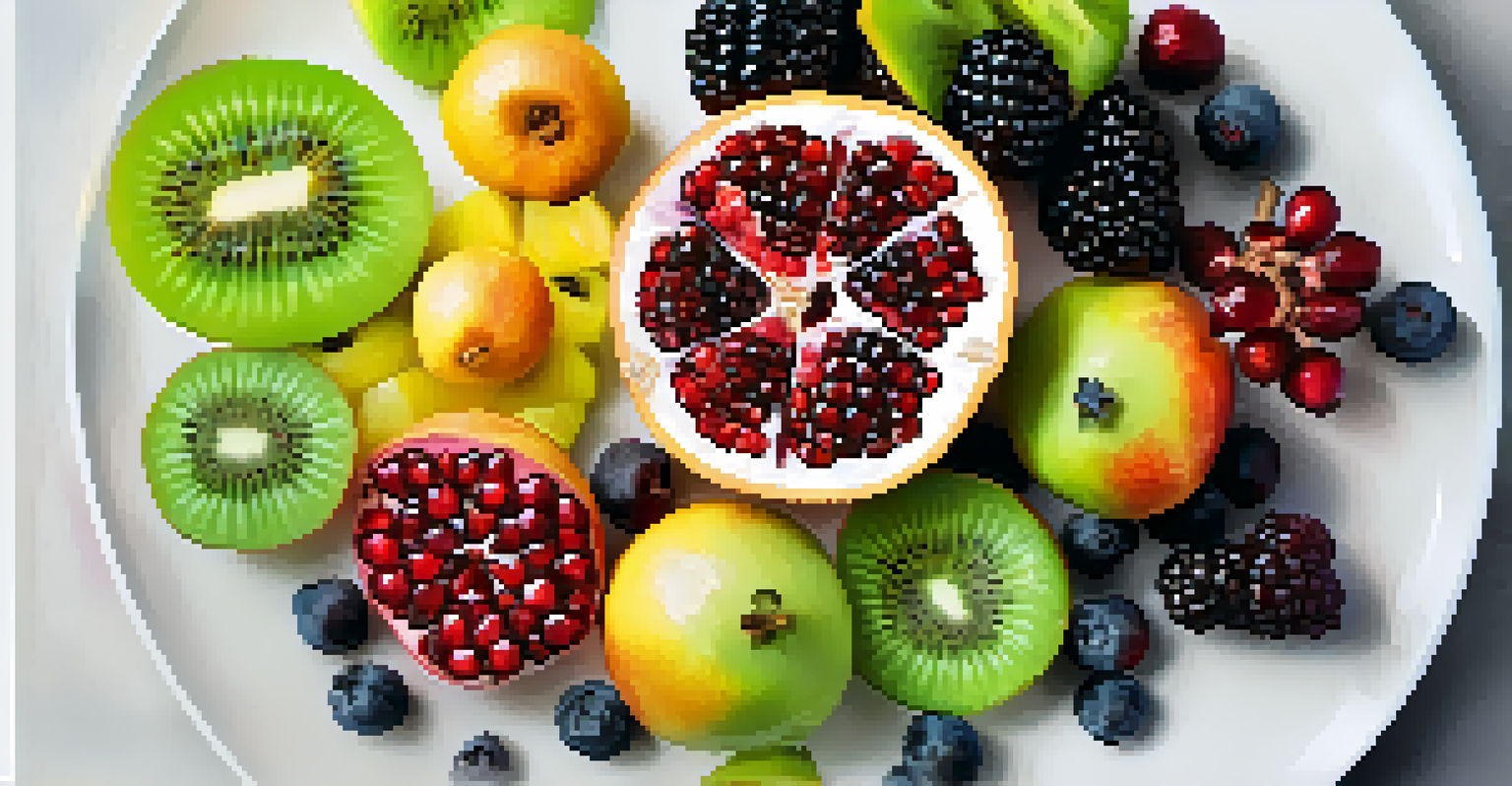The Role of Antioxidants in Raw Foods for Athletic Recovery

Understanding Antioxidants and Their Benefits
Antioxidants are natural compounds that help combat oxidative stress in the body. When we exercise, our muscles produce free radicals, which can lead to inflammation and fatigue. By neutralizing these free radicals, antioxidants play a crucial role in recovery and overall health.
Antioxidants are the body's natural defense against the damaging effects of stress, allowing us to recover, rebuild, and thrive.
These compounds can be found in various foods, particularly fruits and vegetables. Common sources include berries, spinach, and nuts, all of which are often consumed raw to maximize their nutrient content. Incorporating these foods into your diet can significantly enhance your recovery post-exercise.
In essence, antioxidants not only protect cells from damage but also support the body's healing processes. This means that athletes can benefit greatly from understanding how to leverage these powerful nutrients in their diets.
The Link Between Raw Foods and Antioxidant Levels
Raw foods are often rich in antioxidants because cooking can sometimes diminish their potency. For instance, many vitamins and phytochemicals can be sensitive to heat, which means that eating foods raw can preserve their beneficial properties. This is why athletes are increasingly turning to raw diets for optimal recovery.

Fruits like blueberries and pomegranates are packed with antioxidants and are best consumed raw. Adding these to smoothies or salads can create delicious and nutritious meals that support recovery. The vibrant colors of these foods often indicate higher antioxidant levels, making them visually appealing and health-boosting.
Antioxidants Boost Recovery
Incorporating antioxidant-rich foods into your diet can significantly enhance muscle recovery post-exercise.
By focusing on raw foods, athletes can ensure they are getting the maximum health benefits. This approach not only aids recovery but also contributes to better overall performance in the long run.
Top Raw Food Sources of Antioxidants
When it comes to raw foods, certain items stand out as powerhouse sources of antioxidants. Berries like strawberries, blueberries, and blackberries are not only tasty but also brimming with these vital compounds. Incorporating a variety of these fruits into your daily meals can make a significant difference in your recovery time.
Let food be thy medicine and medicine be thy food.
Leafy greens like kale and spinach are also fantastic options. They offer a plethora of nutrients, including antioxidants, and can be easily added to salads or smoothies. The versatility of these green superfoods means they can fit into any meal plan effortlessly.
Nuts and seeds, such as walnuts and chia seeds, are another excellent source of antioxidants. Not only do they provide healthy fats, but they also contribute to a balanced diet that supports recovery and energy levels. Snacking on raw nuts can be a simple way to boost your antioxidant intake.
How Antioxidants Aid in Muscle Recovery
After a rigorous workout, your muscles need time to recover and repair. Antioxidants play a vital role in this process by reducing inflammation and muscle soreness. By incorporating antioxidant-rich foods into your post-workout meal, you can help your body recover more efficiently.
Research has shown that athletes who consume higher amounts of antioxidants experience less muscle damage and recovery time. This means that a diet rich in raw foods can lead to faster recovery, allowing athletes to train harder and more frequently.
Raw Foods Maximize Nutrients
Eating raw foods preserves their antioxidant levels, providing optimal health benefits, especially for athletes.
Incorporating colorful fruits and vegetables into your meals can be an easy way to ensure you're getting enough antioxidants. The more variety on your plate, the better equipped your body will be to handle the demands of athletic training.
Timing Your Antioxidant Intake for Maximum Benefit
Timing can be just as important as the amount of antioxidants you consume. Eating antioxidant-rich foods before and after workouts can help preemptively reduce oxidative stress and aid in the recovery process. This practice can lead to better performance and less downtime between training sessions.
For instance, having a smoothie with spinach and berries before a workout can provide your body with the necessary nutrients to combat free radicals. Post-workout, a salad topped with nuts and seeds can continue this protective effect, ensuring your muscles have what they need to heal.
By being mindful of when you consume these foods, you can optimize their benefits. This strategic approach to nutrition can set you up for success on your athletic journey.
Combining Antioxidants with Other Nutrients
While antioxidants are crucial, they work best when combined with other nutrients. For example, pairing antioxidants with carbohydrates can help replenish glycogen stores after exercise. Foods like quinoa salad with cherry tomatoes and avocado offer a well-rounded meal for recovery.
Additionally, protein is essential for muscle repair, and when combined with antioxidant-rich foods, it creates a powerful recovery tool. A post-workout smoothie with protein powder, spinach, and berries can deliver everything your body needs in one delicious drink.
Timing Matters for Antioxidants
Strategically consuming antioxidants before and after workouts can improve performance and reduce recovery time.
The key is to create balanced meals that incorporate a variety of nutrients. This holistic approach not only supports recovery but also enhances overall athletic performance.
Practical Tips for Incorporating Raw Foods
Incorporating more raw foods into your diet doesn’t have to be overwhelming. Start by adding a few servings of fresh fruits and vegetables to your daily meals. Simple swaps, like snacking on raw almonds instead of chips or enjoying a fresh fruit salad for dessert, can make a big difference.
You can also experiment with raw recipes, such as smoothies, salads, or even raw desserts. There are countless resources available online that offer delicious and easy-to-follow recipes. Making raw foods a fun part of your diet can help you stay motivated and excited about your nutritional choices.

Lastly, remember that balance is key. While raw foods offer fantastic benefits, it's important to maintain a varied diet that includes cooked foods as well. This combination will ensure you receive a wide array of nutrients to support your athletic goals.